Pompeii was a tragic ancient city covered by ash because of a volcanic eruption. Although some of it has already been excavated, many secrets still lie beneath the ash.
Archaeologists have recently uncovered a beautiful banquet room decorated with never-before-seen frescoes. The ash has preserved it for hundreds of years and now researchers can discover more information about the ancient city of Pompeii.
The Tragedy of Pompeii
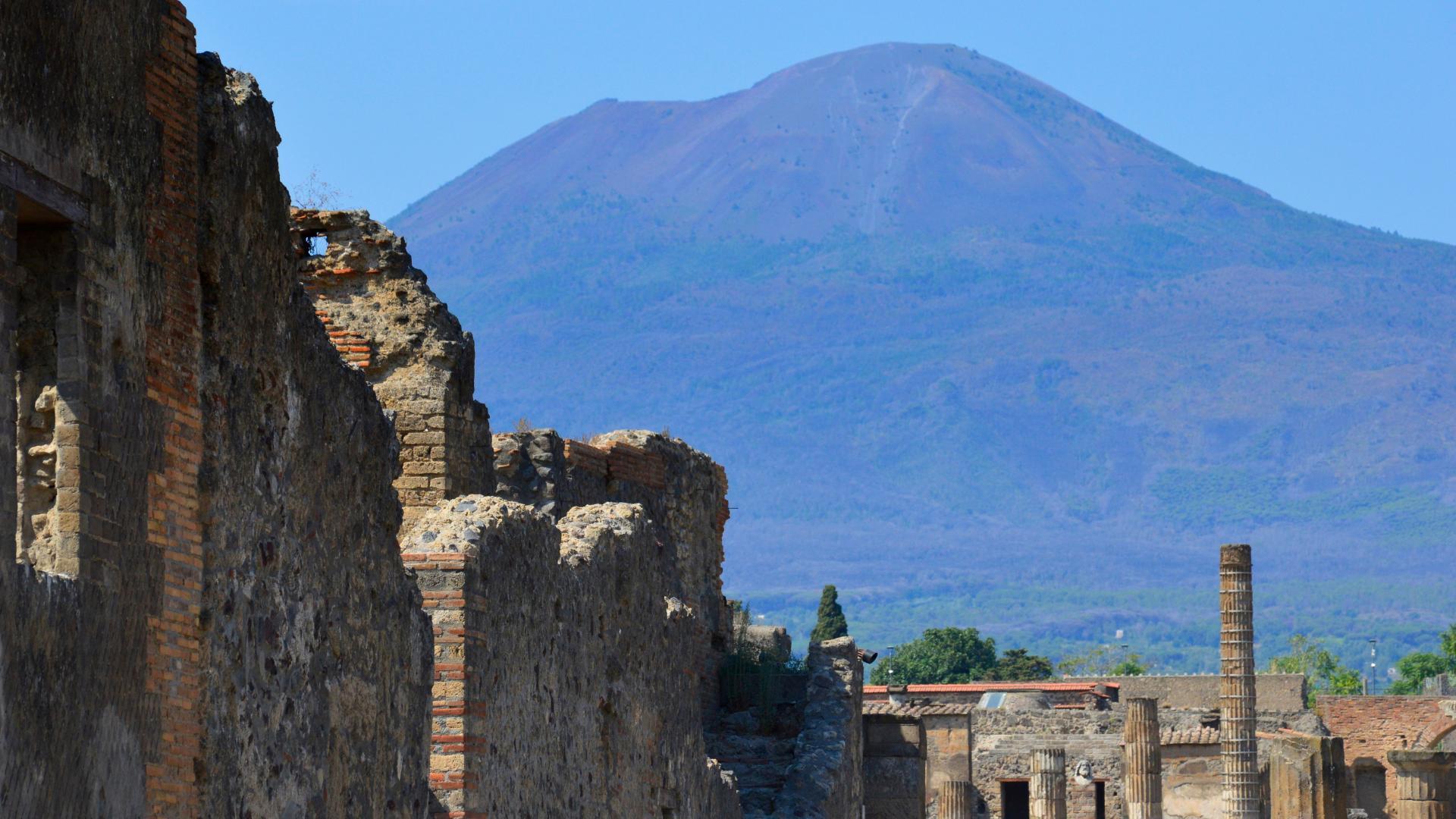
Pompeii was an ancient Italian city. It is near modern Naples in the Campania region of Italy. When Mount Vesuvius erupted in 79 AD, the city was buried under 13 to 20 ft (4 to 6 m) of volcanic ash and pumice.
According to UNESCO, Pompeii is a World Heritage site. It is “the only archaeological site in the world that provides a complete picture of an ancient Roman city.”
Uncovering Pompeii Secrets
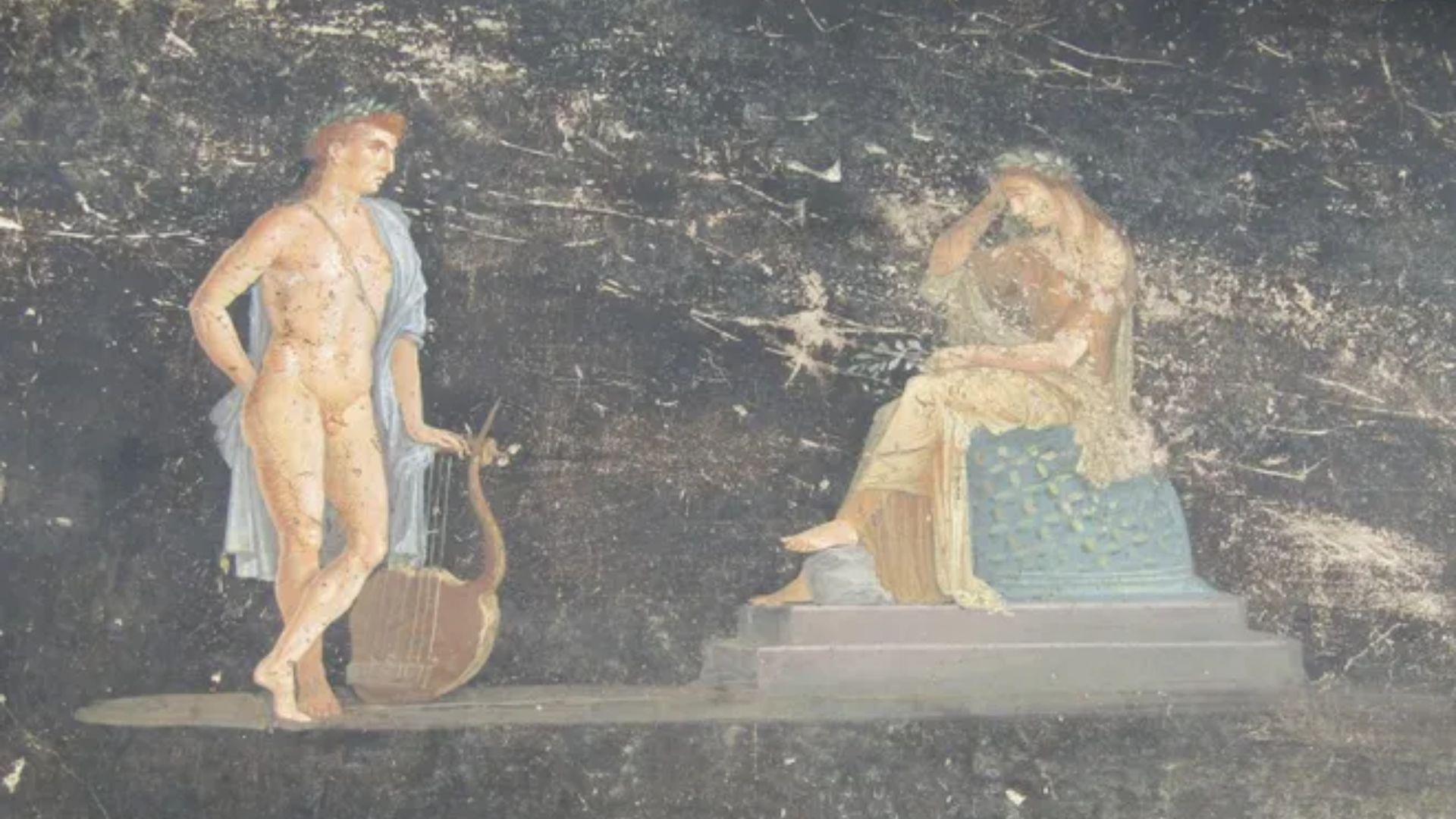
Sophie Hay, an archaeologist in the Pompeii park’s press office, explained that the elegant dining room’s excavation began at the end of 2023. However, in a statement made in April, she said that “the exquisite wall paintings only started emerging just over a month ago.”
Hay explained further that the area’s excavation is “incredibly important” and offers “a more complete story” of not just the city’s destruction, but also of the rich and interesting lives of some of its inhabitants.
Details About the Room
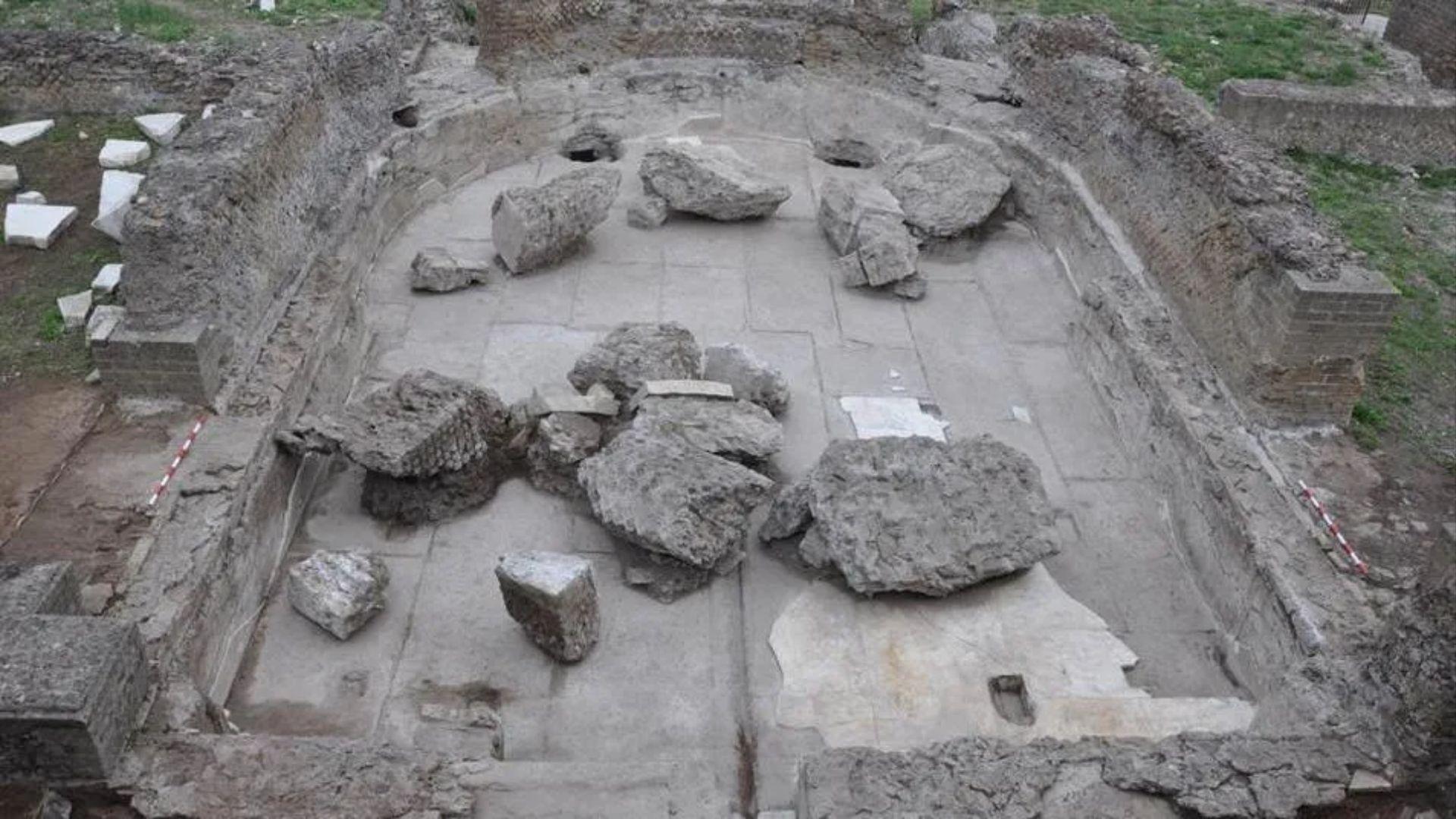
Pompeii archaeological park said the dining room “provided a refined setting for entertainment during convivial moments, whether banquets or conversations.”
Gabriel Zuchtriegel, the director of the Pompeii archaeological park, explained that the walls of the room were painted black so that the smoke from oil lamps was hidden. Then, frescoes were painted in patches around the room.
An Elegant Lifestyle
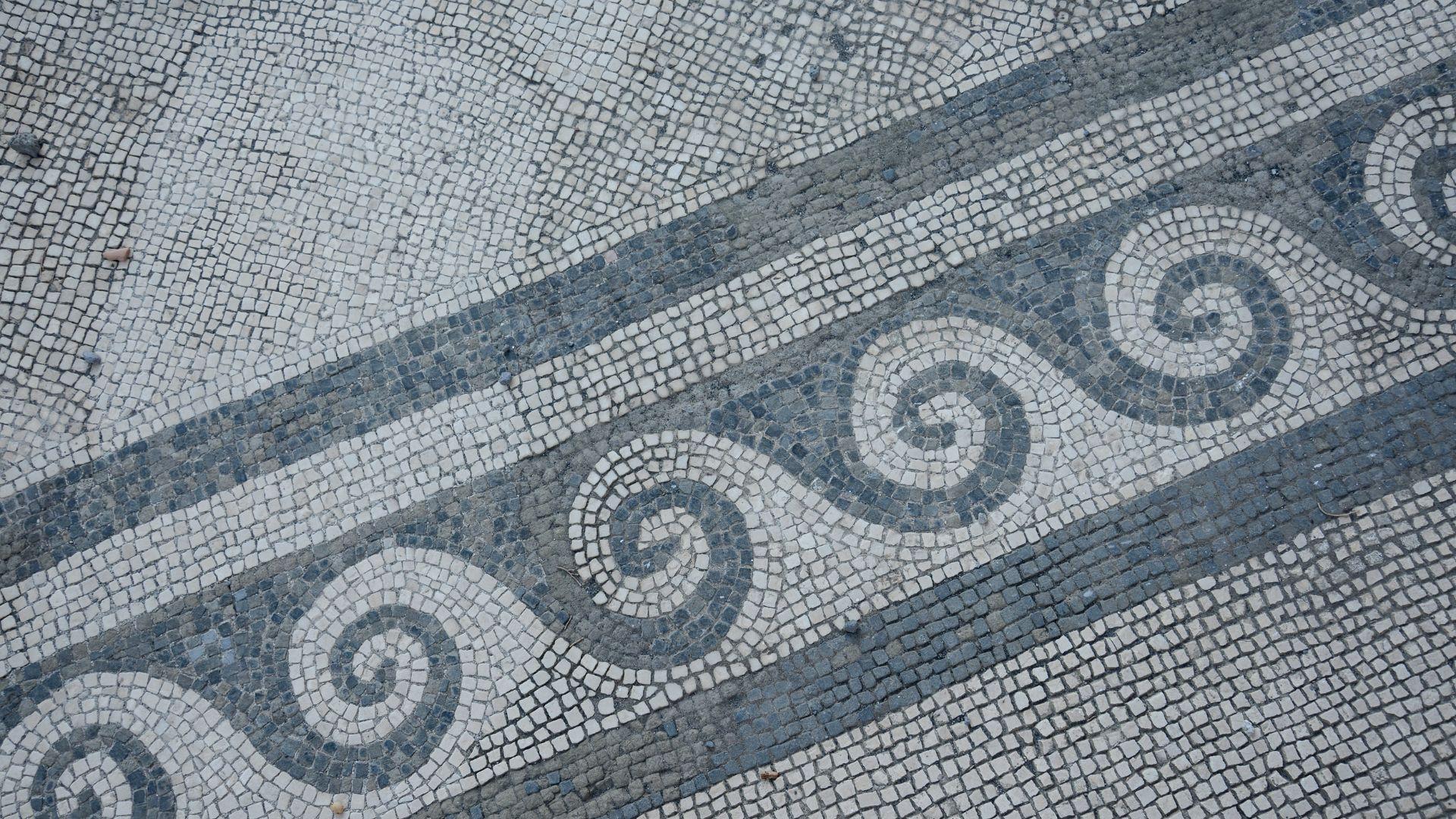
According to the site, the frescoes and mosaics were part of “an elegant lifestyle” of its ancient owners. Hay explained, “The discovery of the black room intended for entertaining on a large scale sets the scene as to how rich Pompeiians propelled themselves in their society.”
Hay believes that the excavation work is “shedding light on the diverse lives of those who inhabited these properties.”
Fabulous Frescoes
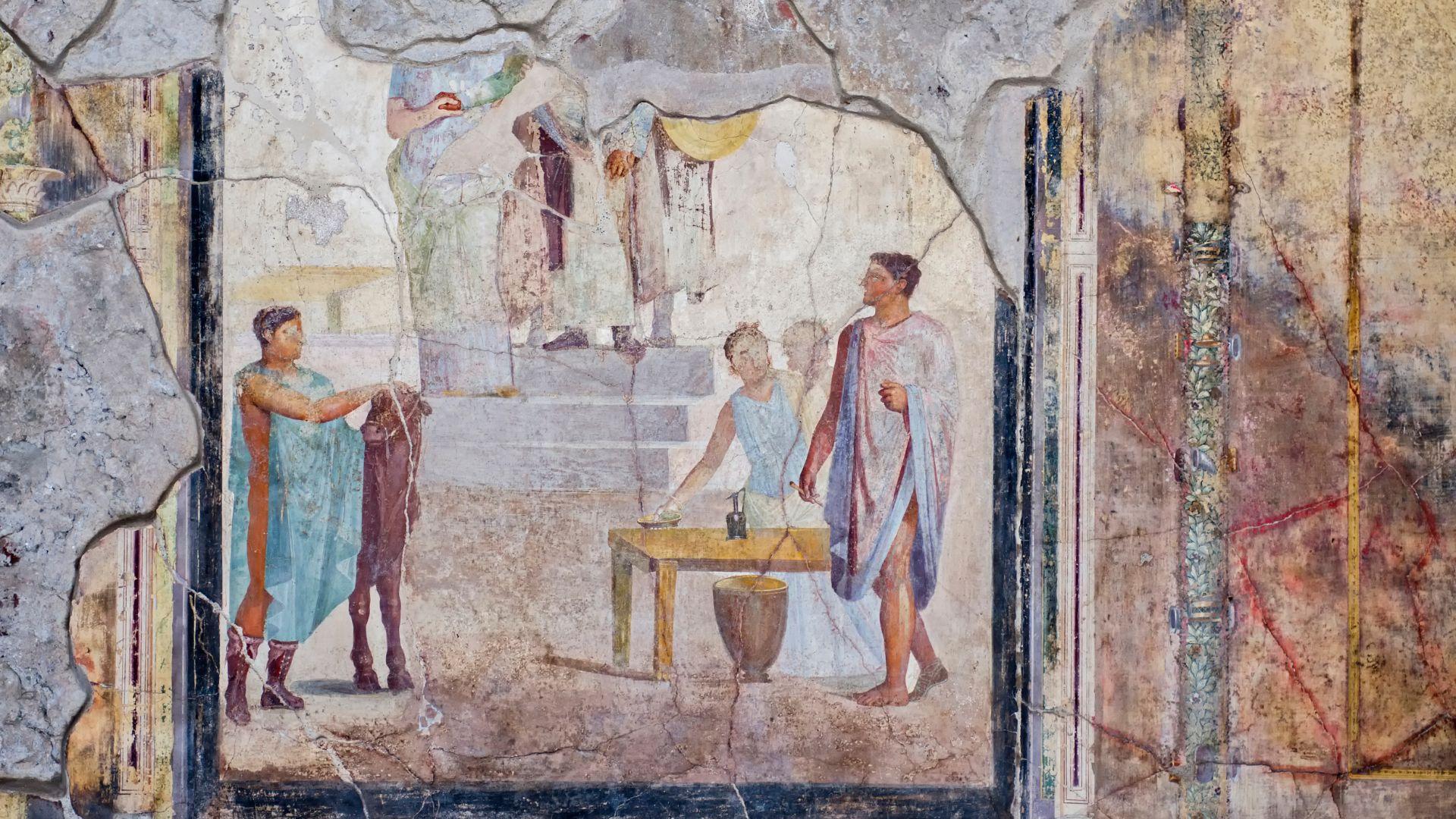
The ancient walls are covered in frescoes—mural paintings made on wet plaster. These frescoes depict mythological characters inspired by the Trojan War. The park explained that these frescoes are not irregular: paintings of mythological figures often decorated the living and dining rooms of Roman houses or other places where they would entertain guests.
“People would meet to dine after sunset; the flickering light of the lamps had the effect of making the images appear to move, especially after a few glasses of good Campanian wine,” Zuchtriegel joked about the frescoes found in the dining room.
A Special Meeting Place
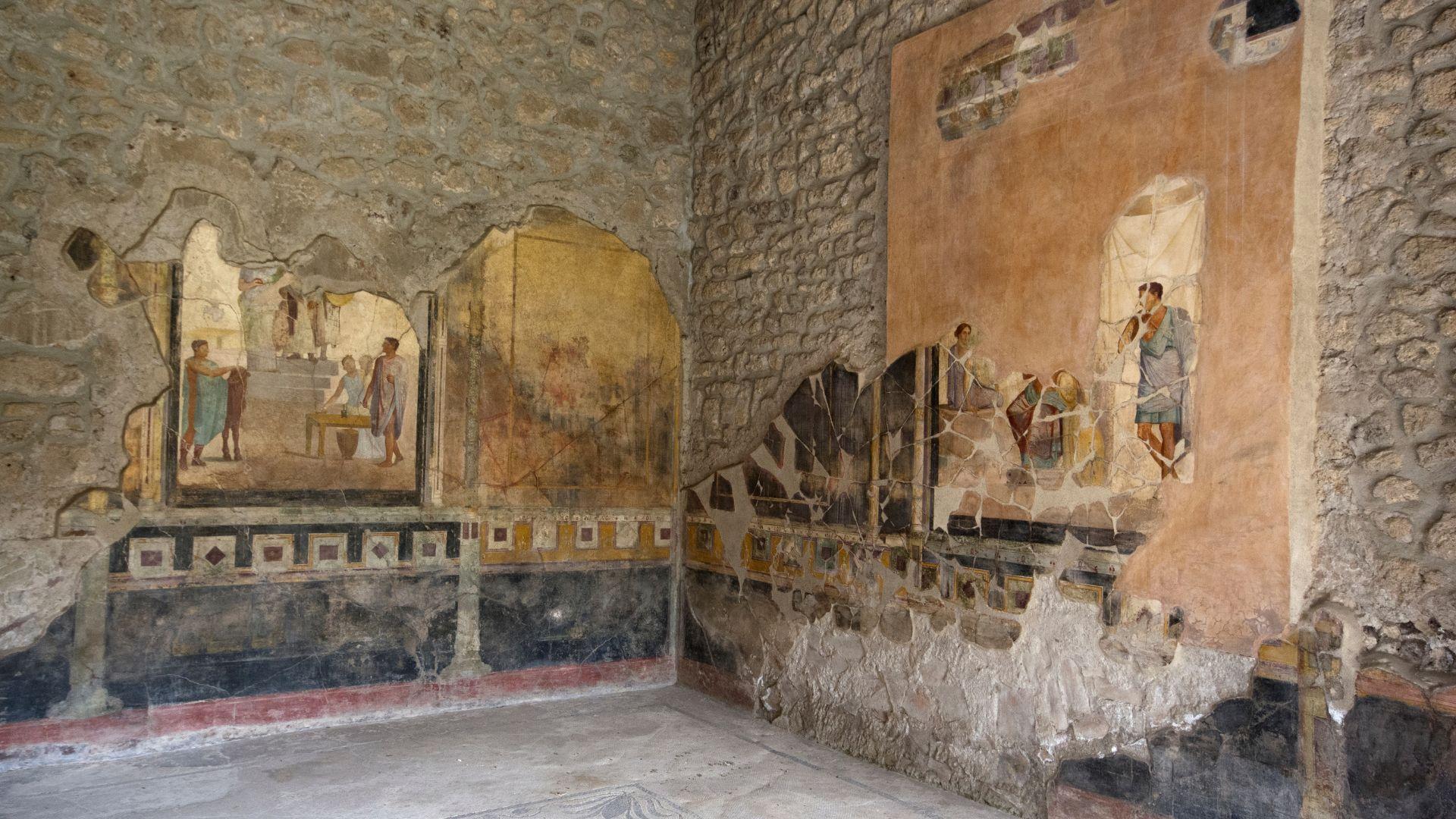
The uncovered banquet room measured about 49 feet long and 20 feet wide. It opened onto a courtyard with a staircase to the first floor. The banquet room was discovered as part of ongoing excavation works in the Regio IX area of the ancient Pompeii site.
Beneath the property’s staircase, building materials were stored. Additionally, according to the park, drawings of “two pairs of gladiators and what appears to be an enormous stylized phallus” were found there as well.
Diving Deeper into the Art
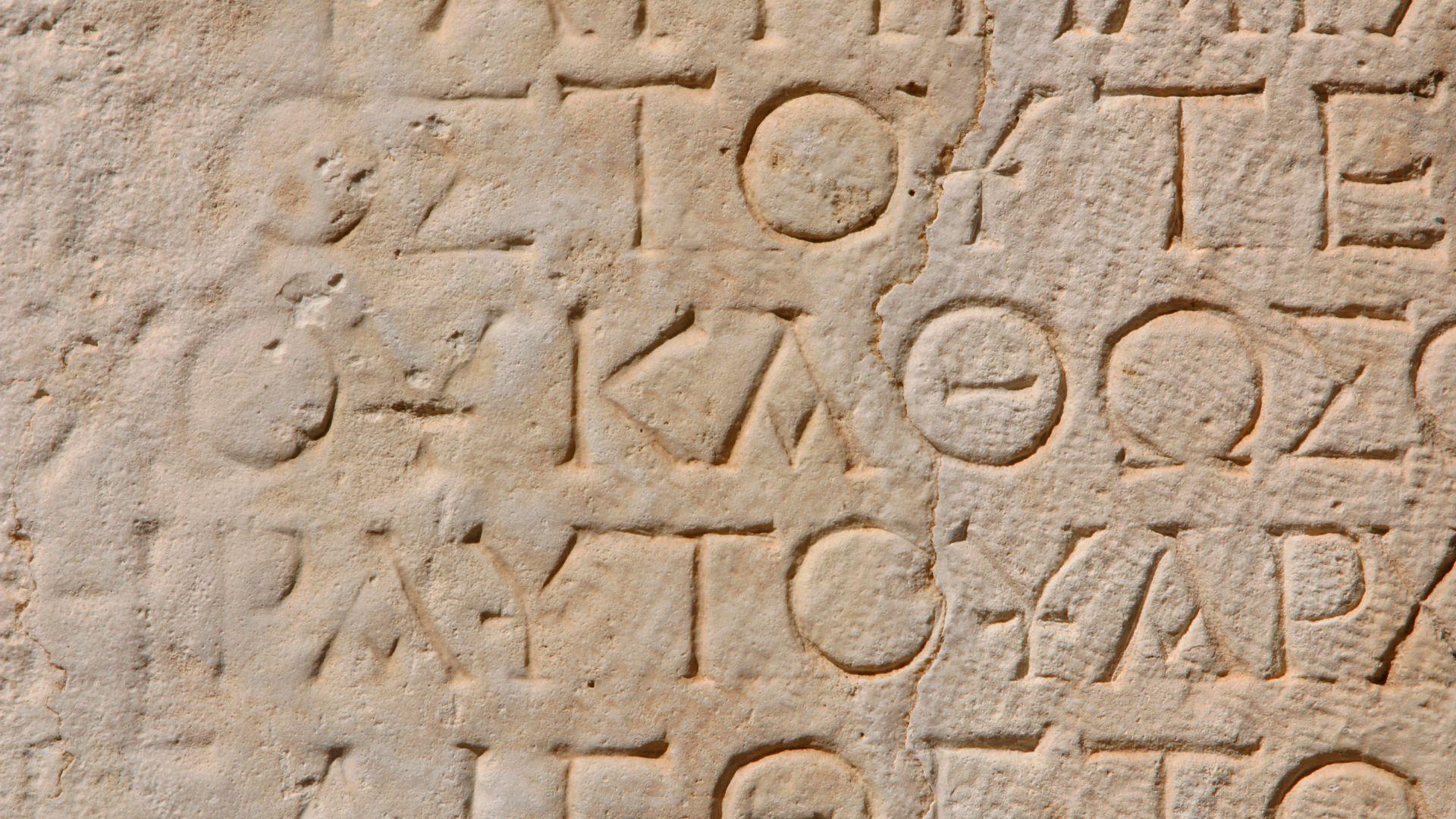
The recently discovered frescoes depict figures featured in classical Greek works such as Homer’s Iliad and Odyssey, and ancient Roman literature. Specifically, the frescoes show scenes from the legendary Trojan War. The war was between the early Greeks and the people of Troy in Western Anatolia around the 12th to 13th century BC.
Some of the frescos show Helen of Troy and Paris—the son of the Trojan king—who is named Alexandros in the painting (his Greek name). Other illustrations depict Cassandra—a character from Greek mythology who could predict the future—and the god Apollo, who cursed her and made her unable to prevent the capture of Troy.
Deeper than Romantic Myths
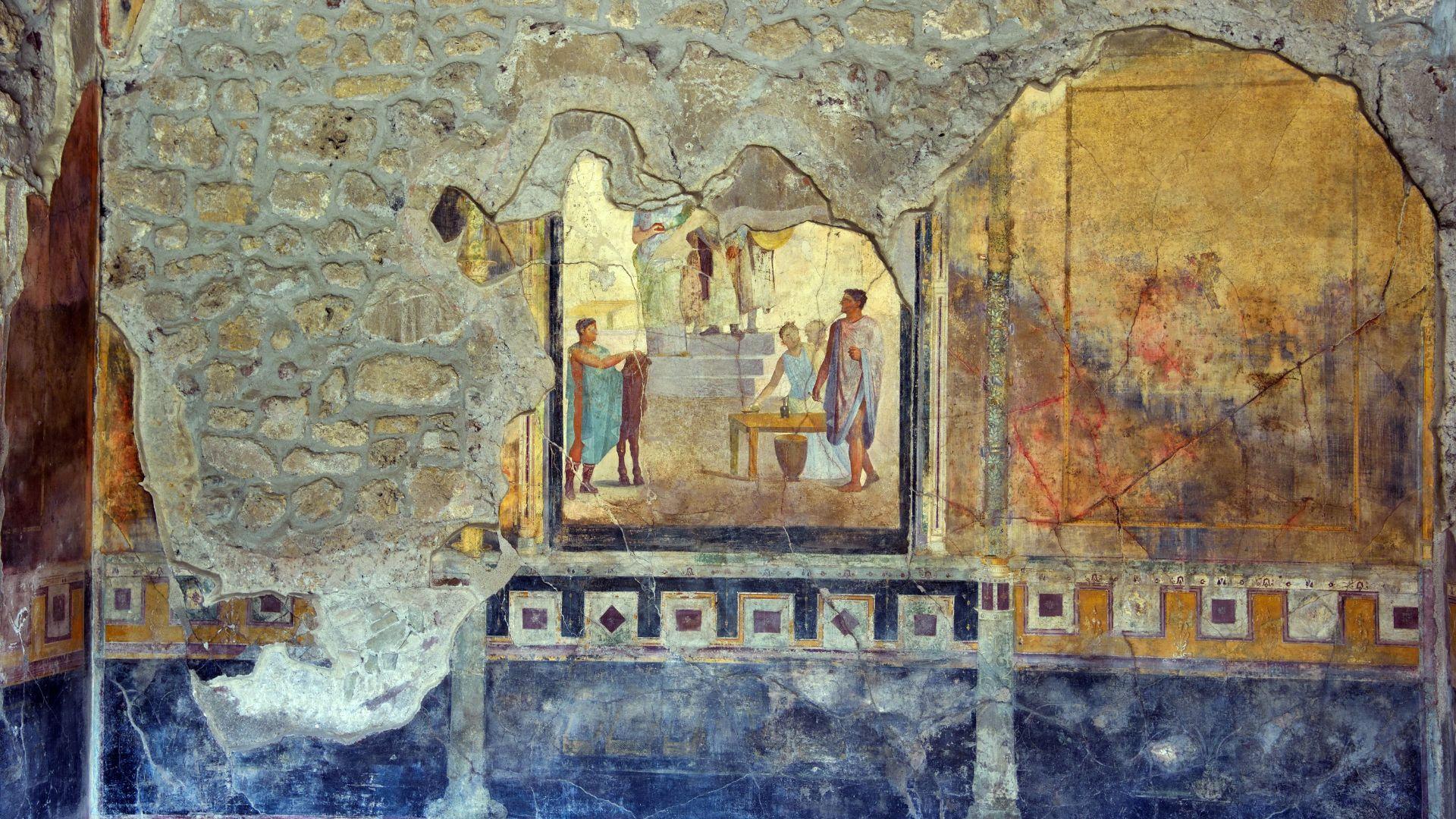
Zuchtriegel explained the significance of these depictions. “The mythological couples provided ideas for conversations about the past and life, only seemingly of a merely romantic nature,” he said.
He went on to explain, “in reality, they refer to the relationship between the individual and fate: Cassandra who can see the future but no one believes her, Apollo who sides with the Trojans against the Greek invaders, but being a god, cannot ensure victory, Helen and Paris who, despite their politically incorrect love affair, are the cause of the war, or perhaps merely a pretext.” Ancient Romans would have had a lot to discuss!
Other Recent Discoveries
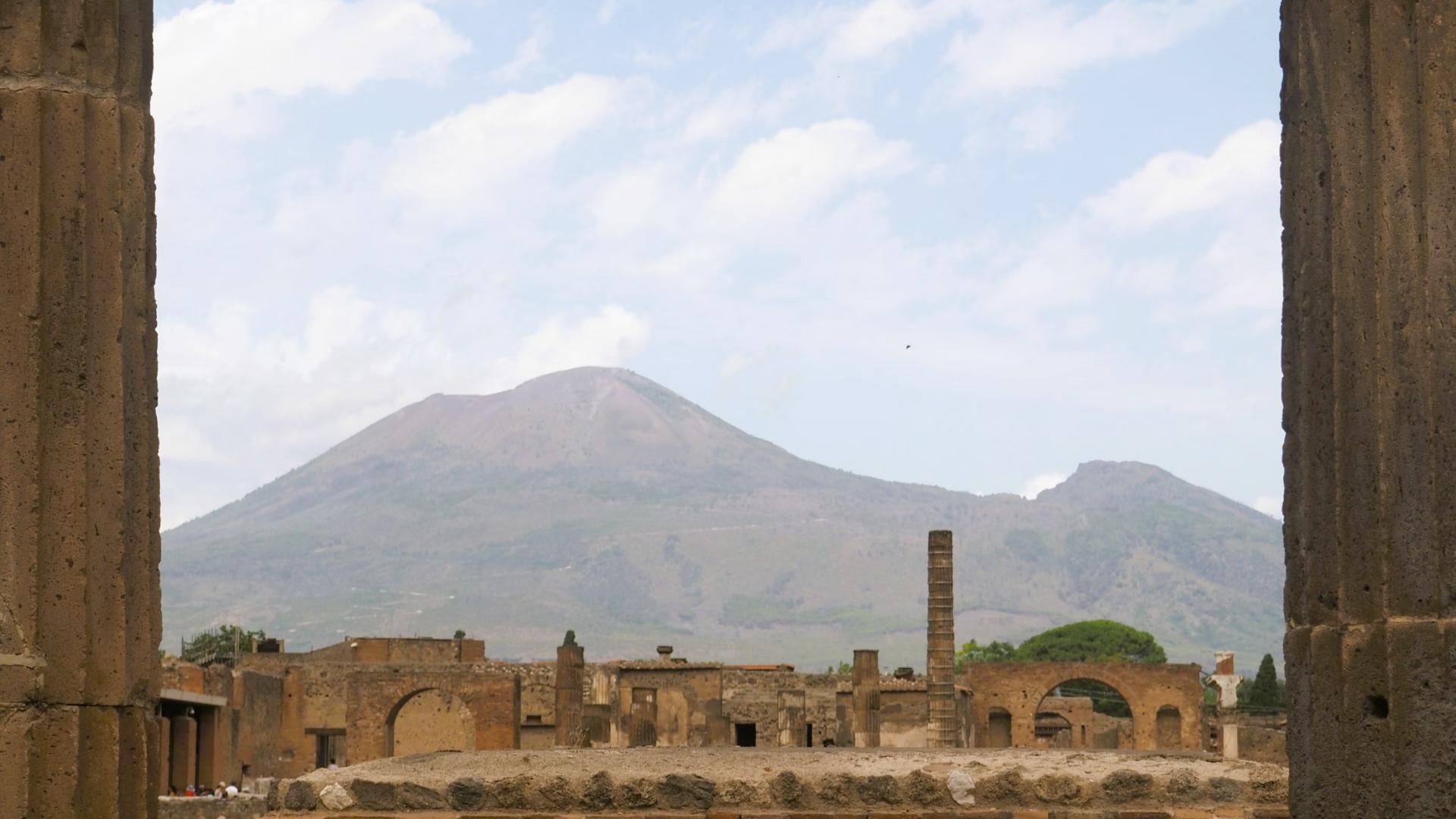
According to the park’s information, the Pompeii site is home to more than 13,000 rooms across 1,070 residential units, as well as public and sacred spaces. Nearby to the banquet room are two interconnected recently discovered houses and a house with a bakery.
Other recent discoveries in Pompeii include a prison bakery where enslaved workers and donkeys were held together. A rather funny recent discovery is a fresco that seems to show an ancient precursor to pizza.
More Beautiful Secrets to Discover
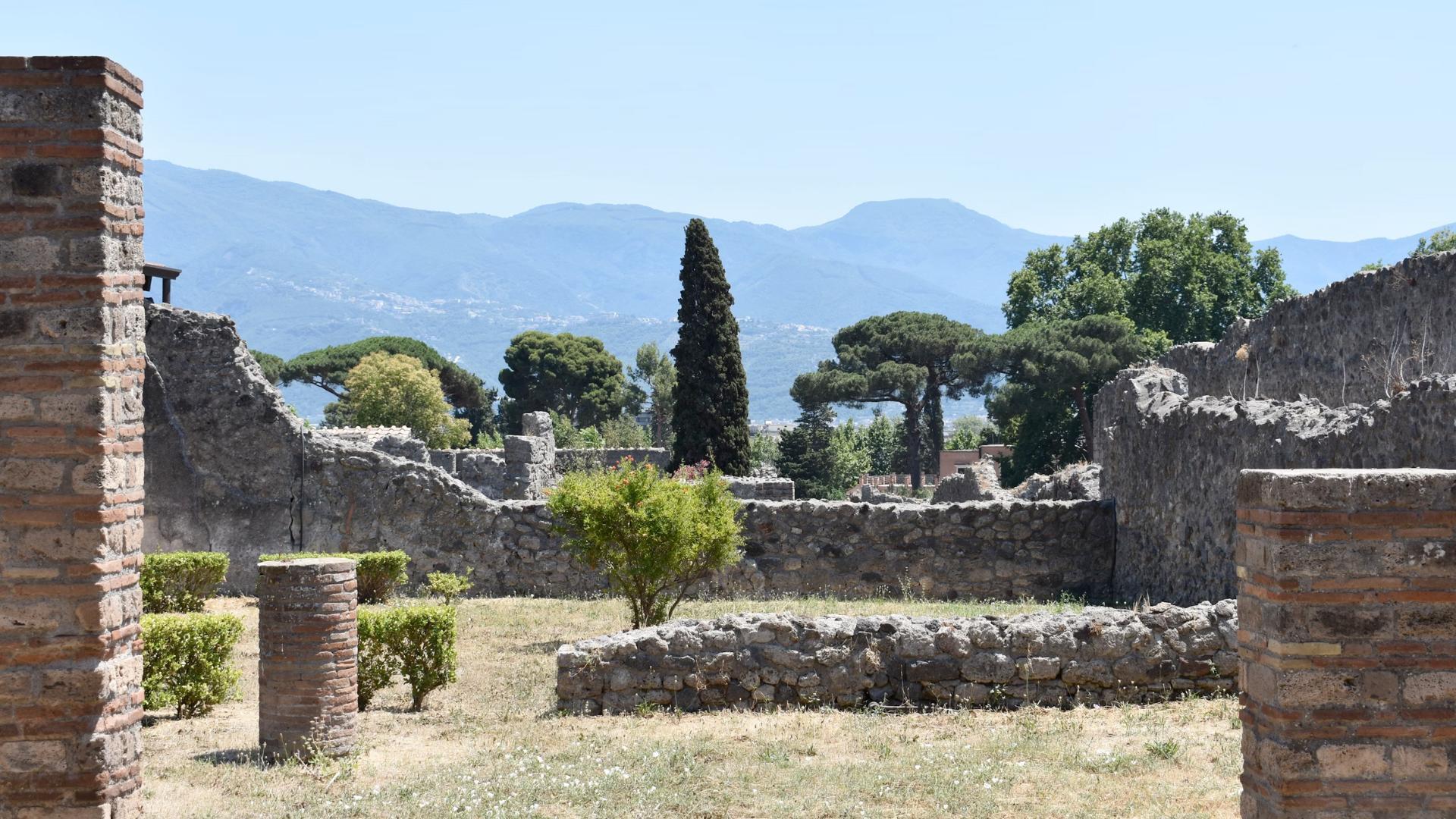
Italian Culture Minister Gennaro Sangiuliano said, “Pompeii is truly a treasure chest that never ceases to surprise and amaze us because, every time we dig, we find something beautiful and significant.”
According to Hay, a third of the area within the city’s walls has yet to be excavated. There is much of Pompeii to still be explored!
Living Life in Ancient Pompeii

The banquet room and other recent excavations show how life was for people in ancient Pompeii. “We see in one property the evidence of a lavish life with entertaining at the heart of it,” Hay explained, “but just next door we see evidence of the dark side of life in Pompeii for enslaved people forced to live and work in harsh conditions in the bakery; the walls of which incarcerated these people.”
Pompeii is a fascinating ancient city. As archaeologists uncover more secrets that have been covered by ash for thousands of years, we will discover more about this mysterious and tragic city.

